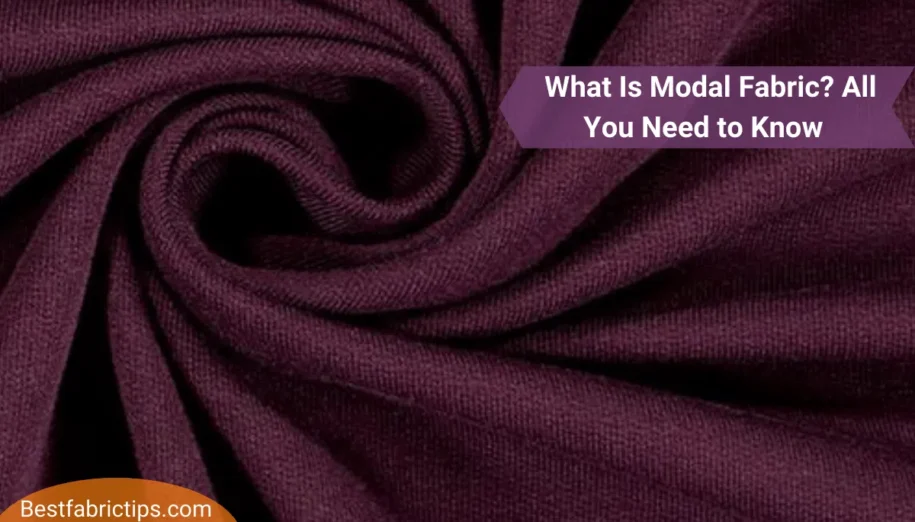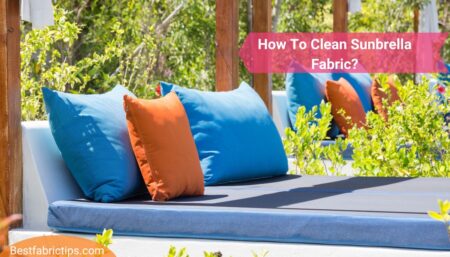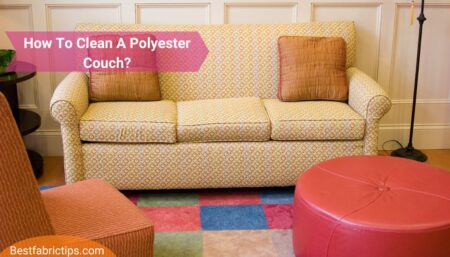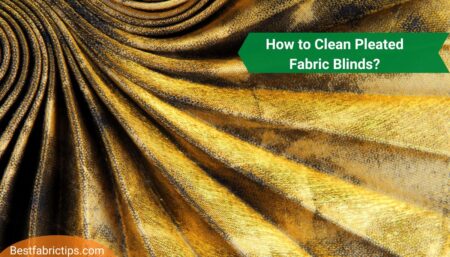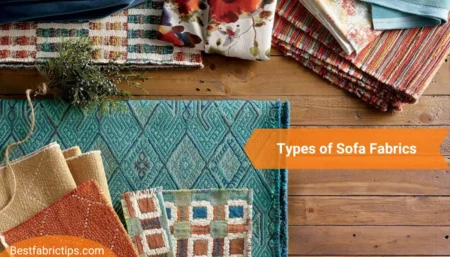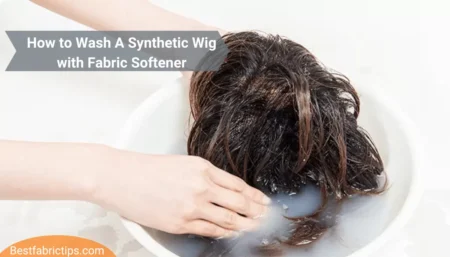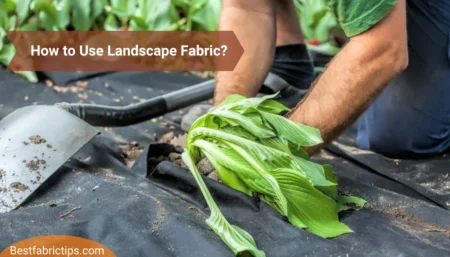Known as Modal fabric, it is a bio-based fabric manufactured from the cellulose of beech trees. Cotton is typically regarded as the more environmentally friendly choice since beech trees require less water to grow and, as a result, the manufacturing process consumes around 10–20 times less water.
What is modal fabric?
Modal is a semi-synthetic fiber that has gained popularity in recent years due to its use in sportswear. This cotton substitute is breathable and absorbent, and it is used in the production of clothing, pyjamas, bathrobes, bed linens, and other items. Many businesses use modal in their goods as an environmentally beneficial alternative to viscose or because of its unique properties. Nonetheless, it may not be as environmentally friendly as many people believe.
When It Is Used and Worn
- Natural Stretch: Modal’s stretch-ability makes it an excellent choice for things such as t-shirts and sporting clothing.
- Modal is a luxuriously soft fabric with a silky sheen on the surface.
- Modal is a particularly breathable fabric, making it ideal for athletics, base layers, t-shirts, and underwear. The weaving of the fabric allows for excellent ventilation.
- When it comes to water absorption, modal is 50% more absorbent than cotton.
- Modal is extremely durable due to the tight weave and the long fibers that make up the fabric.
- Drapes well: Modal drapes beautifully, much like rayon and other silk alternatives, which makes it an excellent choice for our goods.
- Modal is an environmentally beneficial fabric since it is manufactured from regenerative plants and because it uses fewer chemicals in the manufacturing process than other varieties of rayon.
- Because the fabric is non-pilling and has a smooth texture, it is perfect for everyday wear and use in a variety of settings.
- Colorfastness refers to the fact that the cloth retains dye when washed in warm water and does not bleed dye during the washing process.
- Modal does not shrink. Unlike most other types of rayon, modal does not shrink much when washed and dried.
- Modal is a biodegradable fabric that is totally degradable after use.
- Crease-resistant: Modal is wrinkle-resistant and will maintain its smooth appearance with minimal ironing.
What is modal fabric made of?
The technique of creating modal fabric is very similar to the one used to create viscose rayon, which is a synthetic fibre. Basic to the fabric’s construction, modal rayon is an improvement on traditional viscose rayon that eliminates some of the most wasteful and destructive components of the viscose production process.
The vast majority of customers and producers also feel that modal rayon is a fundamentally superior product to viscose rayon in terms of strength and durability. The harvesting of trees for the purpose of converting them into cellulose is the first step in the creation of modal fabrics. These trees are cut down into chips that are about the size of postage stamps, and the chips are then transported to the production floor for further processing.
Purifying the chips to remove their cellulose content follows, with any remaining tree products being thrown away after that process. Following that, the extracted cellulose is shaped into sheets, which are then submerged or “steeped” in vats of sodium hydroxide, often known as caustic soda, for a period of time to remove any remaining contaminants. When comparing modal rayon to viscose rayon, it is important to note that the former uses far fewer amounts of sodium hydroxide, which leads to less harmful waste.
Following the completion of the steeping process, the sheets are broken down into crumbs. Unlike the crumbs used in the creation of viscose rayon, these crumbs are not aged prior to being immersed in carbon disulfide, which changes the white crumbs into an orange material known as sodium cellulose xanthate, which is used in the production of rayon. It is now that the cellulose that comes from trees can no longer be thought of as organic in the traditional sense.
It is then submerged in caustic soda once again, resulting in a syrupy solution of cellulose xanthate. The modal fabric production process once again skips over the ageing phase that would normally take place at this stage, and the syrupy material is quickly driven through a spinneret to generate fibres as a result.
After that, the fibers are bathed in sulfuric acid, stretched, and woven together to make yarn. It is then wound into spools after being cleaned and bleached a few times and rinsed a few more times. Upon completion of this process, the modal yarn is ready to be subjected to a number of different treatments. These treatments include pre-shrinking, fire resistance, wrinkle resistance, and a number of other treatments that may be applied before it is woven into fabric.
What is modal fabric and what is it made of?
If you are wondering what is modal fabric and why it is called this, then you need to know it is a generic name for a semi-synthetic improvement to viscose. To put it another way, modal goes through an extra procedure that makes it a little bit stronger than regular rayon. Modal absorbs approximately 50% more water per unit volume than cotton, making the fabric breathable and silky smooth to the touch, as well as resistant to shrinking and pilling.
Its qualities are comparable to those of other cellulose fibers in that they are engineered to absorb dye and remain colorfast when washed in warm water, making it a popular choice for underwear and athletics, among other applications. However, while the majority of modal is still produced in Japan, where it was first invented in 1951, the large majority is currently produced in China.
During the production process, reconstituted cellulose from beech trees is spun to create the fibers. The wood fibers are pulped into a liquid state and then squeezed through microscopic pores, resulting in the formation of the thread. This thread is then woven together to form the modal fabric, which may be used on its own or in a textile blend with other materials such as cotton to create a variety of different looks.
What is modal fabric material?
Modal rayon fabric, which is also called High Wet Modulus (HWM) rayon, was first made in Japan in 1951 as a cheaper alternative to silk. It was made to save money by cutting costs.Modal is extremely similar to ordinary viscose rayon in appearance and feel. However, it is also more durable, more breathable, and can handle more moisture than cotton.
Known as “semi-synthetic,” modal is a fabric that is frequently blended with other fibers to make a soft and long-lasting textile. Known for its silky-smooth feel, it is one of the most luxurious vegan textiles available. It is often used by high-end sustainable clothing businesses to make clothes.
What is modal fabric type?
Moderately stretched Rayon fabric, which is typically combined with other materials, can be used for a range of different applications. When modal fibers are used in clothes, they are frequently combined with a mixture of cotton and polyester to create the final garment.
When a modal is combined with spandex and lycra materials, it acquires stretchy qualities that make it perfect for both leisure and active use, such as yoga and other sports. As a result of its absorbency, modal fabric is also suitable for use in medical and hygienic items, and it is also used to produce underwear. Because it is so long-lasting and powerful, it is also used in the production of automobile tires as a reinforcement in the rubber compound.
When the fibers of cotton are blended together, the properties of the resulting fabric are enhanced because the fabric resists shrinking and provides strength and durability to the cloth. A key advantage of modal cotton blends over cotton alone is that they retain their form and are very resistant to twisting and wrinkling. Modal cotton blends also have a fantastic ability to drape. Because there is less pilling of the fabric, it is easier to keep and care for than other fabrics. It can be dyed with fabric dyes, and when it’s washed, the colors don’t run as quickly, so they stay new for a longer time.
Conclusion
Because of its environmental benefits, modal fabric is a popular choice among eco-conscious consumers. It outperforms several other types of fabrics in terms of long-term durability. This material is made from a lot of different things, but it also has a lot of extra benefits, like breathability, durability, and comfort. Because you are supporting a company that uses modal fabric, you can check a box for the type of world you want to live in.
A company that uses modal fabric may be supported, and you can find many that use only Lenzing modal as their main fabric. The other hand, not every modality is made equal. When shopping for a new shirt or a pair of pajamas, seek out a transparent brand that promotes sustainably farmed beech trees rather than deforestation in the process.

